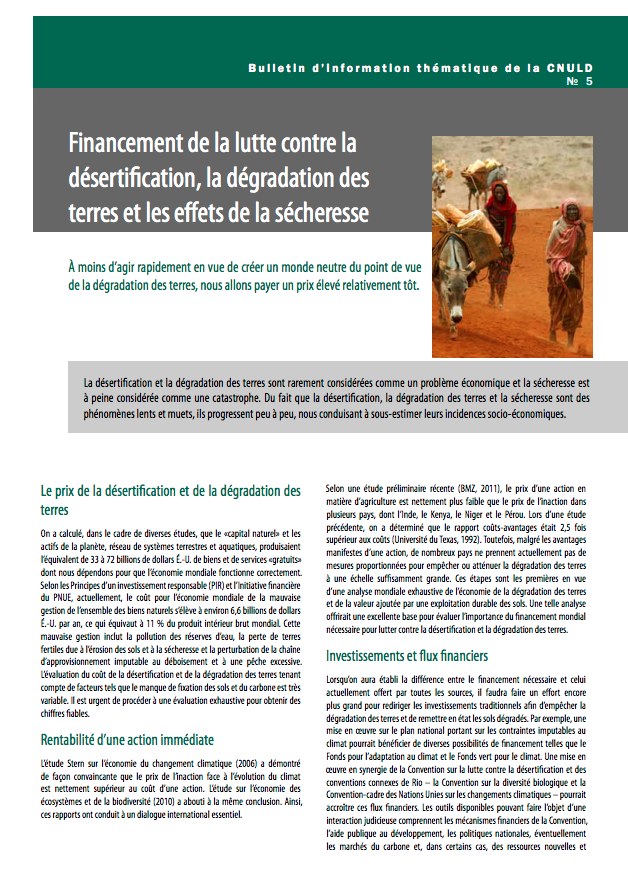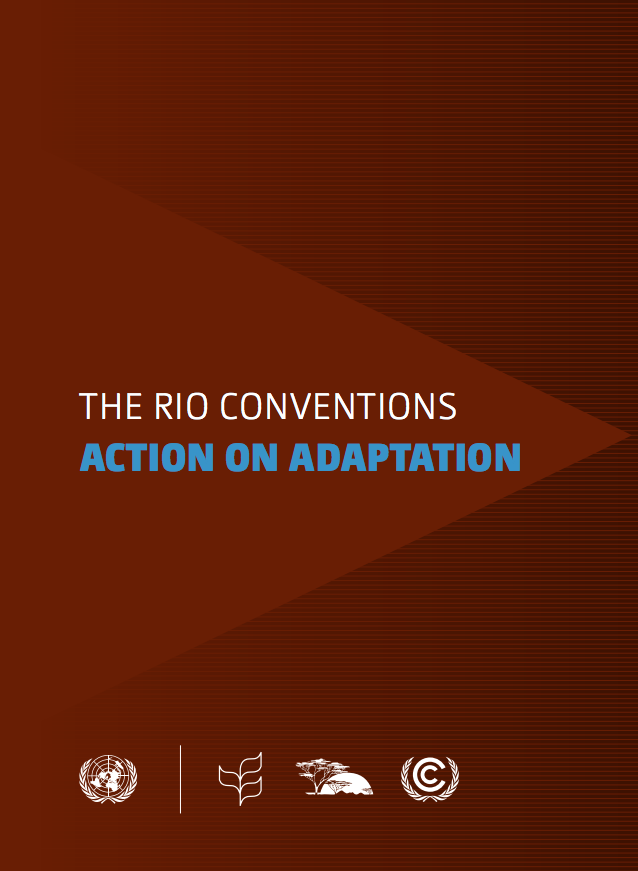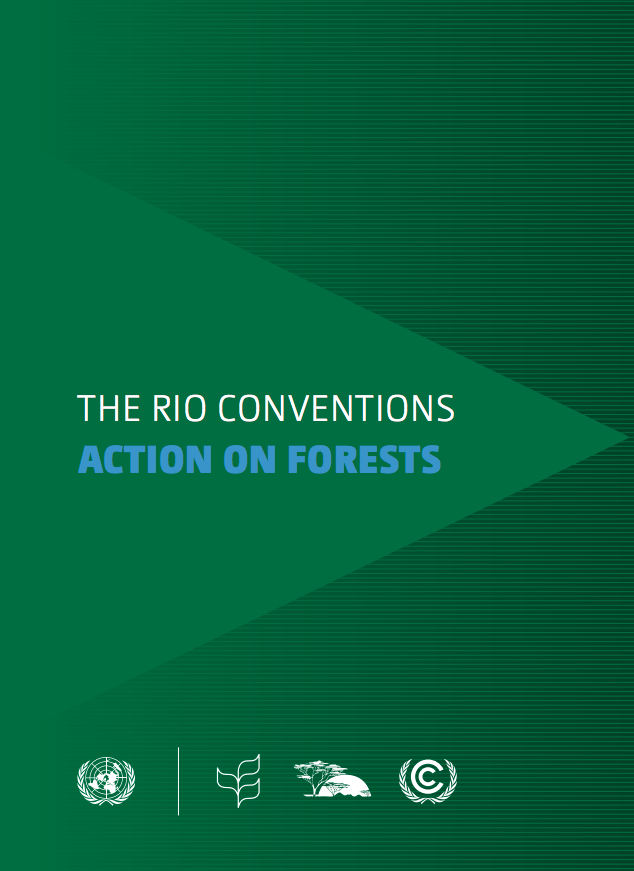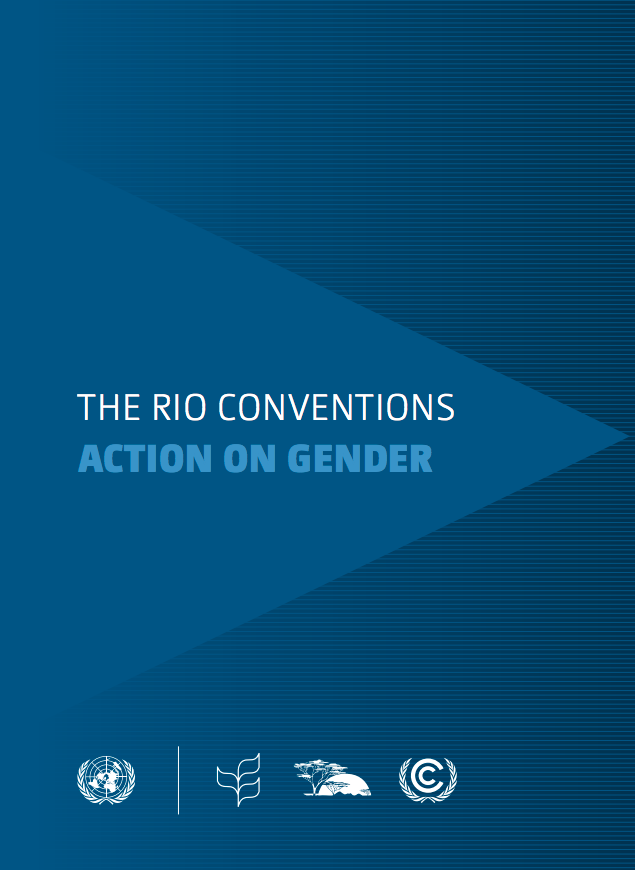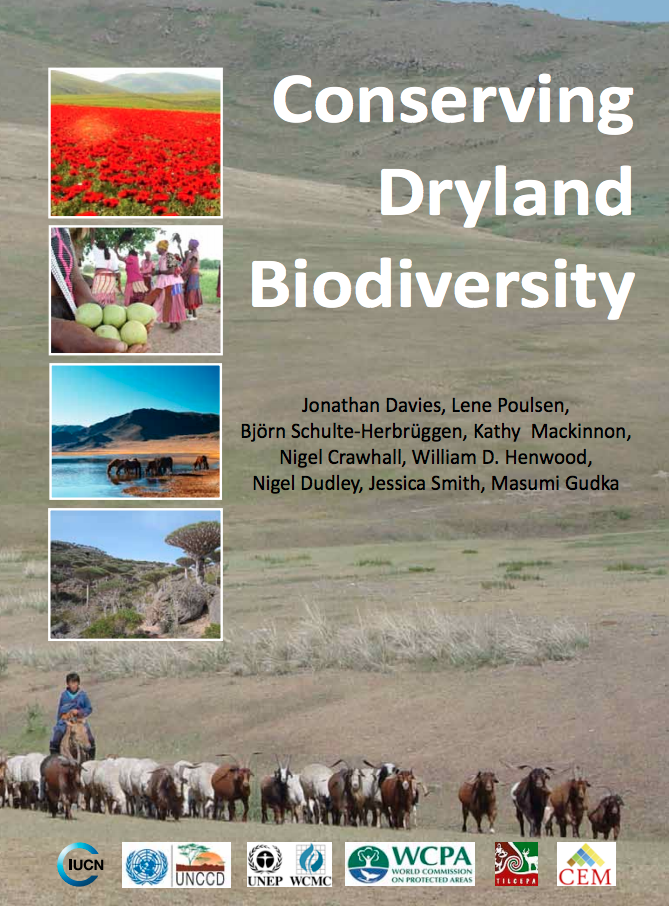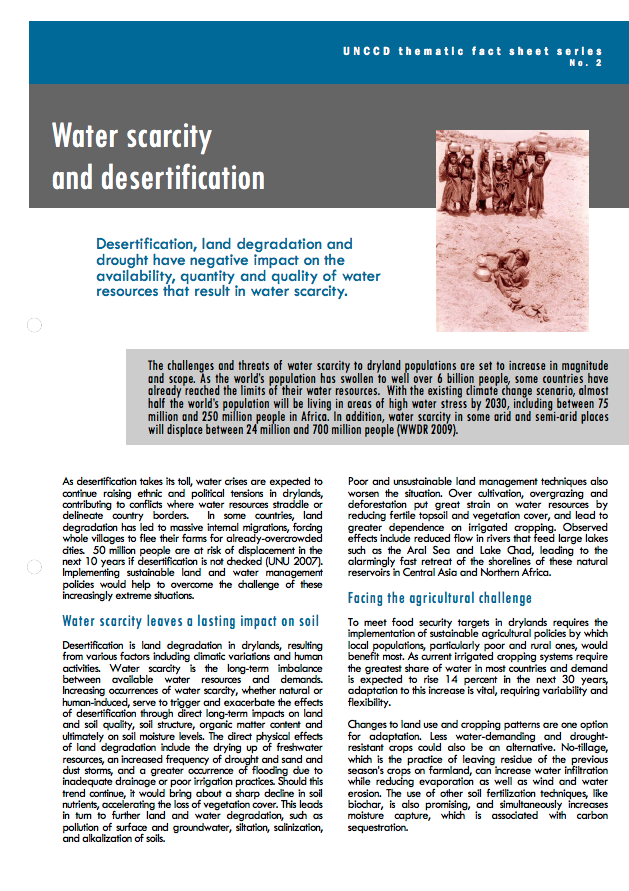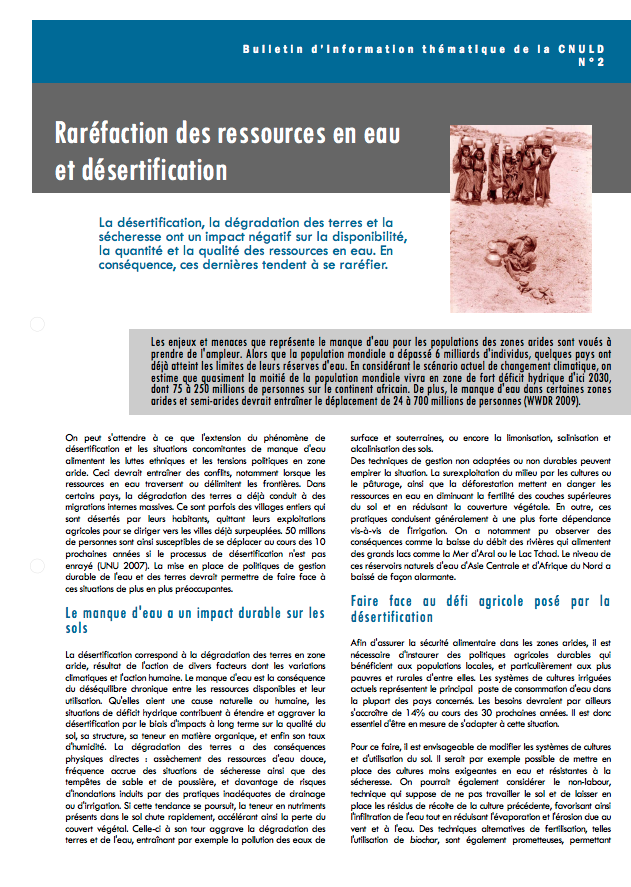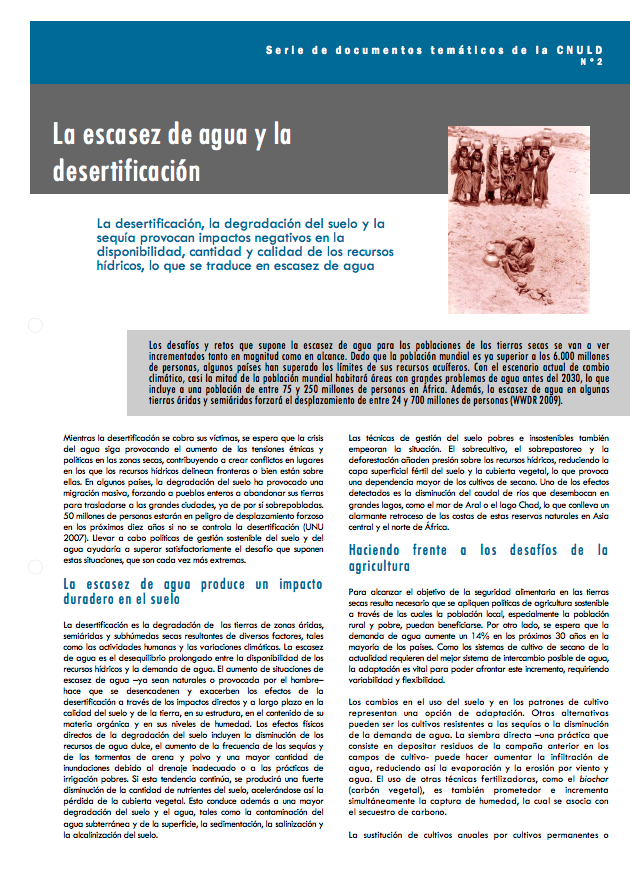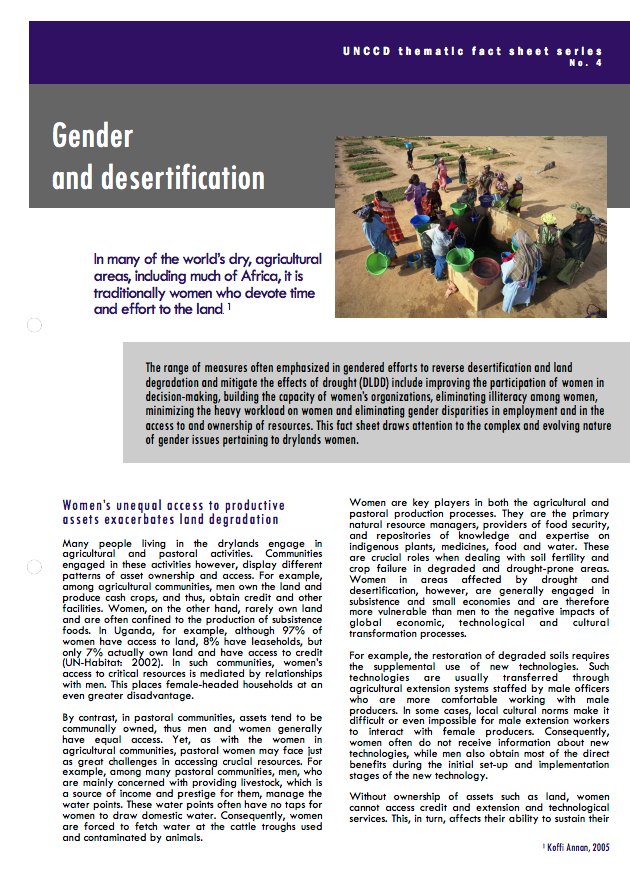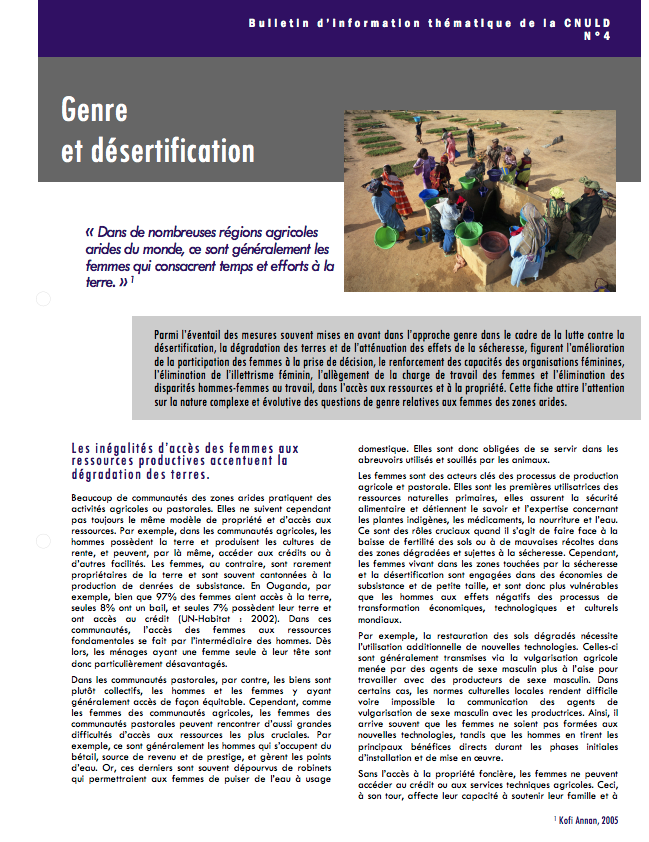Le mécanisme REDD+ et la désertification
Les forêts sèches jouent un rôle important pour la prévention de la dégradation des terres et de la désertification, la conservation de la biodiversité, la production de biens et de services écosystémiques ainsi que l’atténuation des changements climatiques et des incidences des sécheresses et l’adaptation à ceux-ci. Il convient de les intégrer globalement dans le mécanisme REDD+ en s’attachant en particulier aux avantages associés afin d’exploiter le potentiel prometteur des forêts et des techniques agroforestières dans les zones arides



